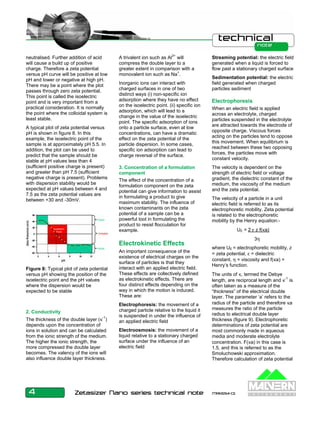This document introduces zeta potential and its importance in optimizing formulations of suspensions and emulsions. It discusses how zeta potential can be used to predict stability and reduce trial formulations. It then covers colloid science fundamentals and theories like DVLO theory that relate zeta potential to colloidal stability. Specifically, it states that zeta potential indicates the stability of the system, with values above +30 mV or below -30 mV generally indicating stability.





